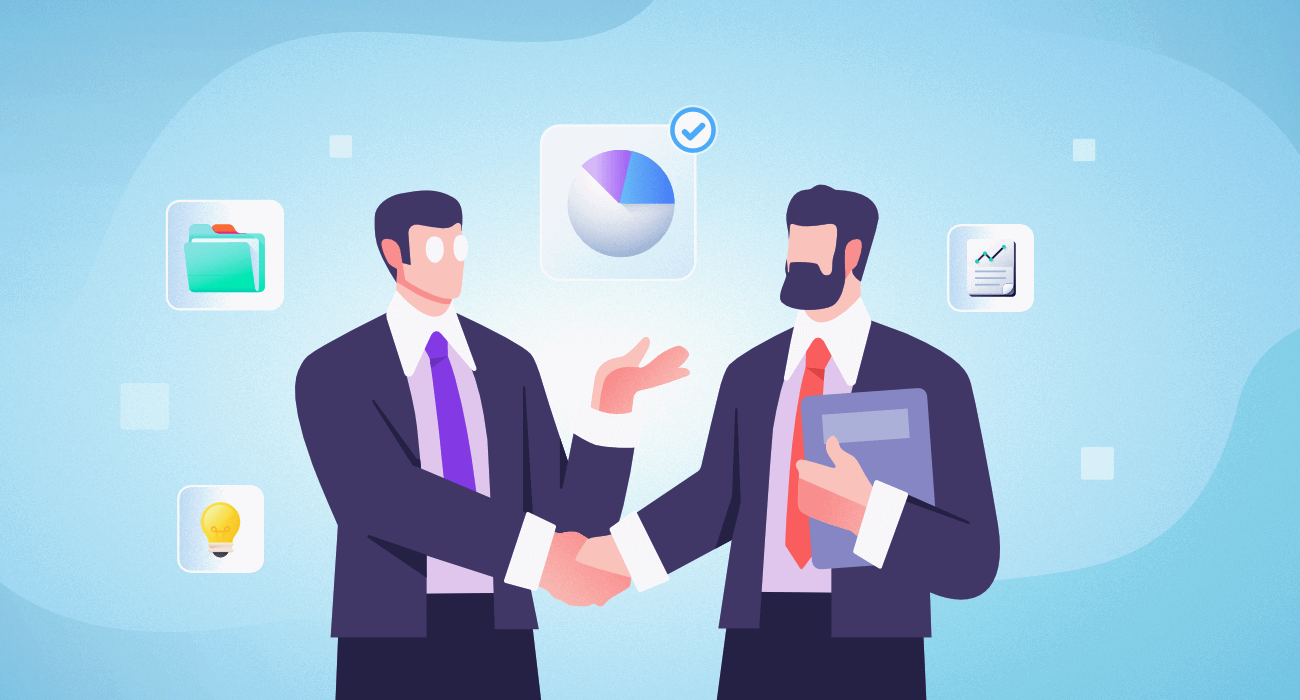Business-to-business customer data is also referred to as B2B customer data or B2B data. In any B2B relation, there have to be transactions between a business and another. B2B data is the information about other companies that your business can leverage new sales and enhance its marketing strategy. As a business, you can leverage these types of data to fuel your business's lead generation fuel market research.
However, data trying to interpret data in a way that can guide your business actions can be problematic given data silos and the quantities of data usually involved.
This article will give you tips for unifying your customer data to engage with customers more effectively and valuable. A service offered by www.infinigrow.com and others can be a game-changer when it comes to unifying data in ways that can help you plan essential elements in your business such as budgeting, marketing, and sales strategies, among others. A unified data set won’t only help you engage with customers more effectively but will also help you streamline your processes so your business runs more efficiently.
To understand how you can unify your B2B customer data, you have to start by understanding various aspects of B2B data. This will make the actual steps to unifying your data smoother.
Importance Of B2B Data
As a business, your B2B data will help you gain a fuller picture of other businesses within your industry. This understanding is necessary to start making better business decisions, creating more business opportunities, closing more sales, and having a more robust marketing strategy.
B2B customer data will hold different significance depending on who you are in a company. If you're in sales, the data will:
- Help you get a thorough understanding of your potential clients
- Help you gain a deeper understanding of your industry and products
- Help you tailor more specific questions
- Help you understand the needs of the customer better
- Help you identify key players and how you can reach them
- Help you make wise, data-driven decisions
Your B2B data will hold slightly different significance if you're in marketing. It’ll help you:
- Create your ideal customer profile (ICP)
- Improve your lead and demand generation
- Gain a better understanding of your target market
- Uncover prospects
- Know where most of your marketing budget should go to help you reach your key performance indicators (KPIs)
The benefits of unified B2B customer data are several. Among them are:
- Aligns marketing, sales, and other customer success operations around a single consistent goal set
- Makes for more accurate insights that can help you improve your business operations
- Direct-dial phone numbers are used to obtain new contact data to achieve performance goals
How To Unify B2B Customer Data
Now that you know what B2B data is and its benefits to different departments in your business, it's time to move on to how you can unify your B2B customer data. While there are some similarities in how a business-to-customer (B2C) business could unify their customer data, it sometimes gets more complicated for a B2B as it requires both specialized tools and skills.
For instance, just because a company representative has inputted details with a Hong Kong address doesn't necessarily mean they are from there. It could be that Hong Kong is where the headquarters for their company is, and that's the business address they use, yet you're looking for much more precise information than that. To further complicate this, you could imagine this customer buying different products and services from your business.
If your data isn't unified, you face a real risk of recording them as multiple first-time customers when it's one client. As a result, you’ll keep circling with this person at one stage of the funnel in your follow-ups when they are, in fact, at a different stage in the funnel. The problem would be your data and its silos, so how do you break them and create one coherent thing that communicates flawlessly throughout the company?
Here are a few ways to ensure that your customer data is unified and useful:
Consolidate Your Data
To unify your data, you have to consider all the various ways it's siloed. Can the sales and marketing department communicate without barriers data-wise? Are your platforms sharing data, or is each machine its own thing? If customer data is confined to specific media, then you haven't come close to tapping your business's full potential.
Start small, then scale up your consolidation efforts as you go. Your data points should match across the board then each department uses the specific data points they need to track their most important metrics.
What are all the ways your customer interacts with you? Is it through your loyalty programs, mailing list, the billing system, marketing campaigns, or others? Gather this data and centralize it, so it's not scattered through the company.
Use A Customer Data Platform (CDP)
For a B2B business, a CDP is a priceless tool if you're trying to unify your data because it does just that!
Trying to centralize your data manually can be such a tedious task, and this is where a customer data platform can come in to help. A CDP will help you create a fully rounded profile of your customers, digging into complexities and nuances such as when to differentiate between actual root location and given address, etc.
The good thing is you don't need to be in IT to know how to operate this. A tool like this is made to be accessible to the entire company, so it should have a user-friendly interface.
Analyze Everything
Having structured your customer data, you haven't achieved actual unification if you haven't started measuring and analyzing the data to gain insights. Those insights also need to be unified, and each department pulls any data set they’re interested in.
This step isn't that hard if you've laid the foundation in the previous actions. To better understand if your current strategies are working, you need to start tracking metrics. Because you're a B2B, it makes sense for you not to be too preoccupied with top-of-the-funnel leads and instead measure the stronger intent signals. If you're tracking key metrics like the keywords businesses are using to search for you and your products, recency, and whether or not their interest is sustained, then you're well on your way to better results.
Remember, you're now measuring from a single body of data after you’ve consolidated it. What you find from your analytics should remain as centralized as the raw data it came from.
Streamline The Customer Journey
Now that your data is structured more comprehensively and you’ve analyzed it, it's time to use the insights from your exercise to create new strategies. Map your customer journey and aim to create a certain overall customer experience at each level.
The journey doesn't end when a company buys from you; using the data you have, you can work on retaining them as a customer and ultimately have them recommend you to people in their circles. This is a good idea for two reasons. The first reason is that it's much easier to keep a customer than to get one from scratch and word of mouth is one of the best marketing methods there is!
Stay Steps Ahead By Focusing On Customer Experience
If you use your data to create a positive journey, then the likelihood of growth in your business due to the compound effect also grows. With technology being open to everyone, you want to make sure your competitors outsmart you.
Your business's customer data is in itself a commodity, and like all commodities, it has the potential to bring you huge profits if you tap into it right. You should work on how you can use the data to engage your customers so much that you're able to solidify and grow your company's hold on the market in the long term. In the long run, nothing beats customer satisfaction.
Keep The Human Element In Your Use Of AI
In your unification process, don't fall into the trap of machining everything because as much as artificial intelligence (AI) has advanced, nothing yet comes close to understanding nuance the way humans do. Even the largest tech giants abide by this rule and use services from actual humans instead of total reliance on machine learning. The machine is just supposed to help make the process faster, but there should be experts in the process helping further interpret the data that's coming in as well as recommending implementation strategies.
Machines make mistakes, so do humans; but when the two work together, then the chances of having the wrong data in your system decreases significantly. So, the two should remain complementary to each other.
Conclusion
These are some tips for streamlining your customer data across all platforms. This will help you increase engagement and also help you collect data in a more efficient way. Not only will this help bring in more customers and make it easier for you to sell, but it’ll also help you create better relationships with the customers you already have.
However, if you fail to do this, everyone else is trying to leverage technology, and a lot of businesses are having difficulty keeping up. Data is an important asset now, just like gold was back in the day. So, if you're serious about using it to engage your customers and create long-lasting relationships that keep your business afloat, then it's time to start streamlining your customer data.















Leave a Reply